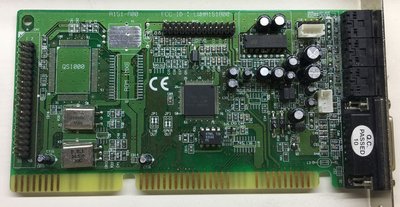First post, by CkRtech
- Rank
- Oldbie
Hey guys -
I don't mess with sound much. Had to make some ISA sound card recordings recently and was having some fun in audacity when I noticed this during noise analysis.
Line-out while sitting at a DOS prompt:
I am certainly not going to assume Hi-Fi from a mid-90s ISA sound card - SNR was not that great back then. Provided my mixer settings are correct and volume levels are adequate for line level out without extra cranking, the noise floor should still remain at a semi-acceptable level. Of course hooking up the line out to a headphone amplifier...eeeh.
But I was wondering how many of you guys may have done some component changes on old sound cards - not only electrolytic capacitor refreshes, but also things such as amplifier swaps, preamp swaps, film caps, removal of unused components (line-in, mic, etc. support components), VRM changes, etc.
And specifically, for fun, - where do you think this particular noise originates?

